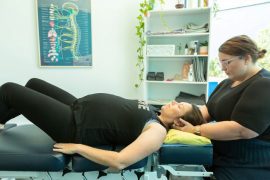By Liz Kirkman
My work is about listening to the body as a whole. Just like when you cut your finger and your body knows to send defenders to clot blood and create a scab; when the body is optimal, the whole body repairs in this way. But what happens when those signals get subverted? Not only do we have a Western medical model, segmenting, diagnosing and pathologising sufferers, but we are coming off the back of a global pandemic where ALL of us have faced challenges and many of those with a history of mental illness have been thrust back into the depths of their traumatic response. In New Zealand, we’ve had a 50% increase of texts to Youthline and calls to Lifeline also doubled during lockdown.
Treating for the last month or so from my inner city clinic has shown even though we are enjoying Level 1, things are definitely not ‘back to normal.’ I can say that a large proportion of my clients are still presenting with some form of trauma response.
COVID-19 has been the last straw on an already overloaded system with most people presenting with an autonomic nervous system ‘buzz’ or ‘tone.’ What I wasn’t prepared for was this expressing in clients’ ventral vagus/social engagement system. We have been told we can’t connect, communicate and engage with others. Whether you are an introvert or an extrovert, this has still been highly challenging on the way we connect to our loved ones, our colleagues, our buddies – and there are certainly researchers confirming the reasons for our Zoom fatigue.
I knew what I was feeling – little did I know, back in April, Stephen Porges, the key researcher of Poly-Vagal theory and our social engagement systems wrote about this very issue.
Porges states, “in the absence of an active social engagement system, the mobilised state provides an efficient neural platform for fight and flight behaviours. For many individuals, this state will reflect chronic anxiety or irritability. When mobilisation does not successfully move the individual into a safe context, then there is the possibility that the nervous system will shift into an immobilised state with associated features of death feigning, syncope, dissociation, withdrawal, loss of purpose, social isolation, despair, and depression.”











